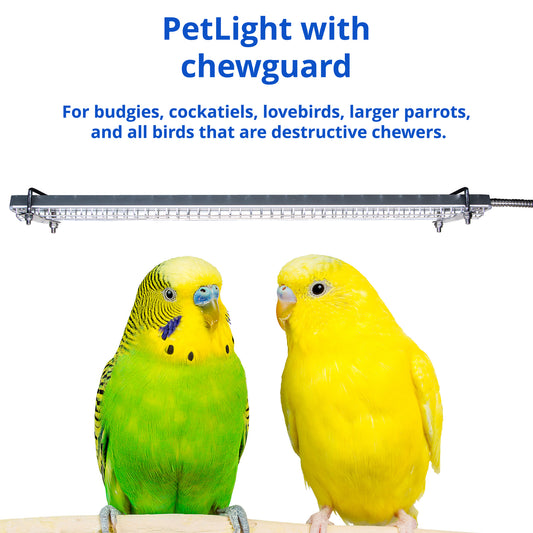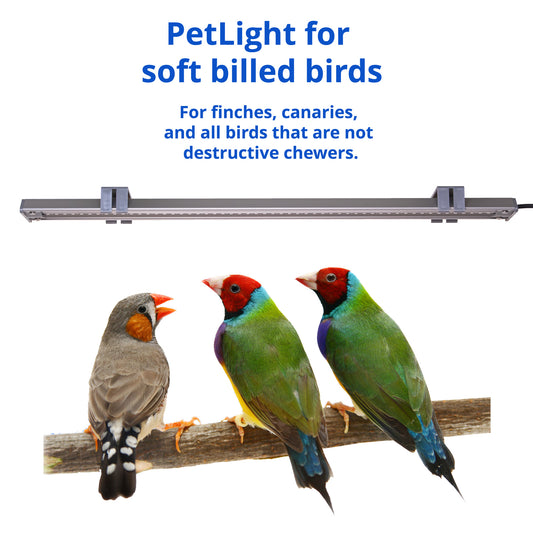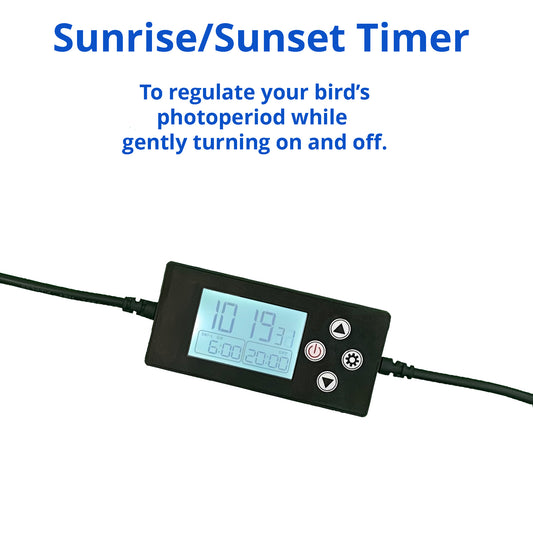Why HappyBird Lights Are UVB-Free (and Why That Matters)
Share

When shopping for bird lighting, you'll likely come across the term UVB — especially on products designed for reptiles. But at HappyBird, we’ve made a clear decision: our lights are UVB-free. And that’s no accident.
Here’s why that choice matters — and what you need to know before buying a UV bird light for your feathered friend.
What Is UVB Light?
UVB (ultraviolet B) is a type of invisible light that sits just beyond the visible spectrum. In the wild, it comes from the sun and plays a role in certain processes for reptiles and mammals. That’s why many reptile lamps are designed to emit it.
But birds indoors aren’t basking in direct sunlight. And the way artificial UVB behaves inside the home is very different from how it works outdoors.
Why We Don’t Use UVB in HappyBird Lights
1. UVB exposure indoors is unnatural
Unlike in the wild, where birds can move in and out of sunlight freely, an indoor cage environment limits that freedom. Using UVB lights inside means birds are often exposed to UVB constantly, at a fixed intensity, and at very short distances.
2. Most UV bird lights are too intense
UVB levels in many lights — especially those designed for reptiles — can be far stronger than what birds would naturally experience. And in a confined space like a birdcage, there’s little room for them to self-regulate exposure. That’s not a natural or safe setup.
3. It’s not necessary for creating a natural rhythm
Birds benefit most from consistent visible light that supports their natural day/night rhythm. A stable, full-spectrum visible light for 10–12 hours per day is what they need indoors — not artificial UVB.
What Birds Really Need from Their Lighting
✔️ A broad, rich visible light spectrum — similar to natural daylight
✔️ Consistent lighting for 10–12 hours per day, even during short winter days
✔️ Mounting directly to the cage — to ensure brightness inside the space they live in
✔️ A flicker-free, safe environment they can comfortably live in every day
None of that requires artifical UVB. That’s why HappyBird lights are UVB-free by design — because we want to create an environment that feels natural and is safe.
Why “UV Bird Light” Labels Can Be Misleading
Products labeled as UV bird lights often borrow language from reptile care. But birds are not reptiles, and their indoor needs are completely different. A lamp that floods a cage with UVB might sound natural — but inside your home, it’s anything but.
Instead, it’s better to focus on high-quality visible light, designed just for birds.
Final Thoughts
HappyBird lights are made for real indoor conditions. No artificial UVB. No reptile-style exposure. Just the right kind of light — in the right place — for the right amount of time.




